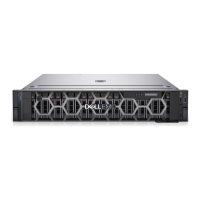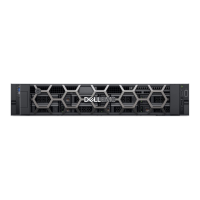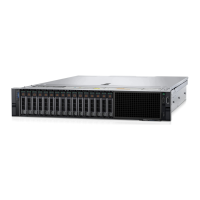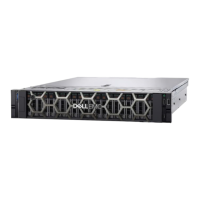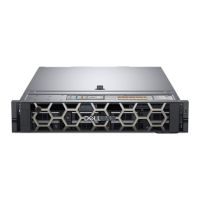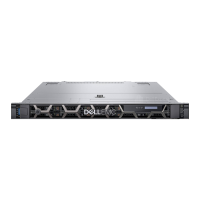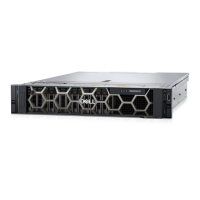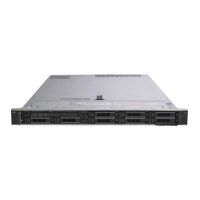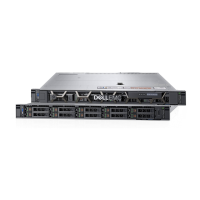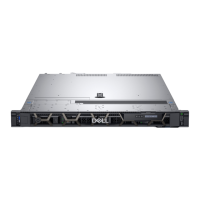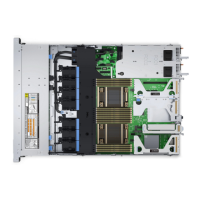Steps
1. Press the blue release tabs to disengage the drive backplane from the hooks on the system.
2. Lift and pull the drive backplane out of the system.
NOTE: To avoid damaging the backplane, ensure that you move the control panel cables from the cable routing clips
before removing the backplane.
Figure 64. Removing the drive backplane
Next steps
1. Replace the drive backplane.
Installing the drive backplane
Prerequisites
1. Follow the safety guidelines listed in the Safety instructions.
2. Follow the procedure listed in the Before working inside your system.
3. Remove the backplane cover.
4. If installed,remove the air shroud.
5. Remove all the drives.
6. Remove the cooling fan cage assembly.
NOTE:
To avoid damaging the backplane, ensure to move the control panel cables from the cable routing clips before
removing the backplane.
NOTE: Route the cable properly when you replace it to prevent the cable from being pinched or crimped.
Steps
1. Use the guides on the system as guides to align the slots on the backplane.
2. Insert the backplane into the guides and lower the backplane until the blue release tabs clicks into place.
Installing and removing system components
65
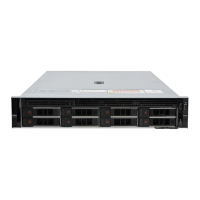
